Applying the Crosstab Filter to a Crosstab Table
The following example illustrates how the Crosstab Filter is used with a Crosstab Table:
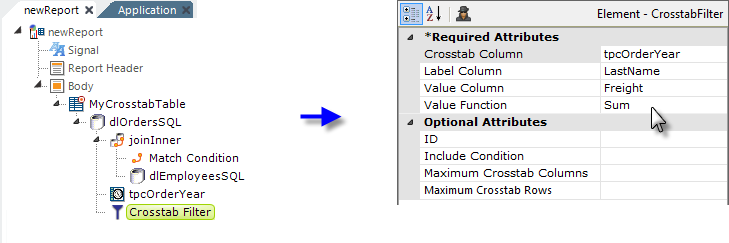
- Our goal is show total freight costs per employee per year. As shown above left, we start by retrieving Order data and joining it with to Employee data, based on Employee ID, which gives us the order data and the last name of the employee responsible for the order.
- We want to show yearly summaries so, because the Order data is time-related, we use a Time Period Column element to parse out the Year value from the OrderDate column. Time Period Columns make working with parts of dates incredibly easy.
- Then we add a Crosstab Filter element beneath a datalayer, and configure is as follows:
- Set its Crosstab Column attribute to the data columns we want to see across the top. These will be the OrderDate years, so enter the tpcOrderYear column name here.
- Set its Label Column attribute to the row labels we want to see down the left. These will be the employees' last names, so enter the LastName column here.
- Set its Value Column attribute to the aggregated values we want to see at the intersections of the previous to items. This will be the freight cost, so enter the Freight column name here.
- Finally, set its Value Function to the type of aggregation we want performed on the freight cost, in this case Sum.
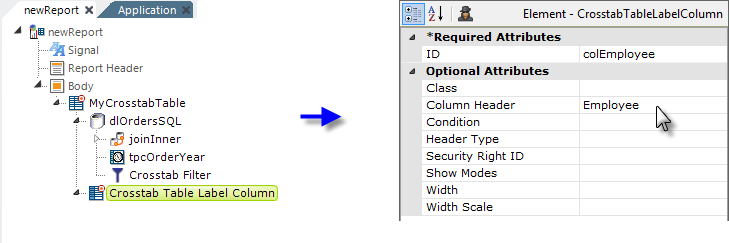
- Next we add a Crosstab Table Label Column element, as shown above left. This is the column our "label" information (the employee last name) will appear in and it's configured as shown.

- Then, as shown above, we add a Label element beneath the column element to actually display the data, and set its Caption to the @Data token for the value (the employee last name) we want to show.
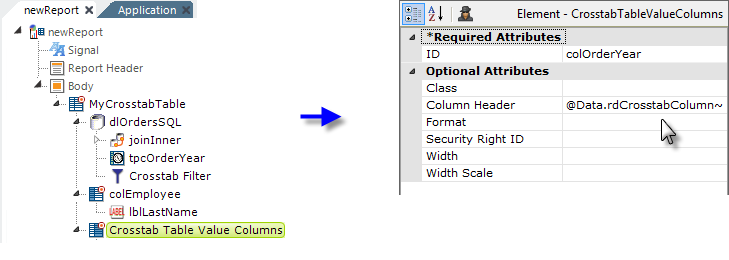
- Now things get a little more unusual: next we add a Crosstab Table Value Columns element, as shown above. This creates the columns (more than one) that will contain the annual aggregated freight value for each employee. So, it's unusual in that it creates multiple columns and also because it uses one of the special Crosstab Table tokens in its Column Header attribute, as shown above right. This token allows the column header to change depending on the data.
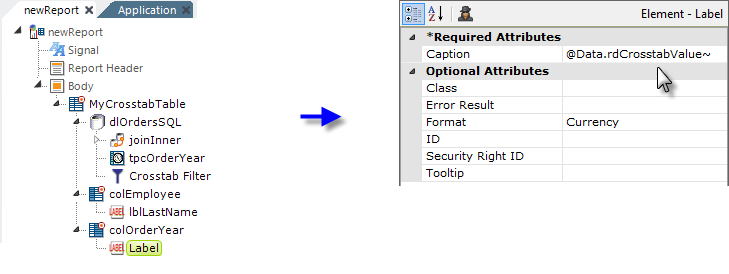
- And finally, we add a Label element to display the data. Its Caption attribute value is provided using another special Crosstab Table token, as shown above. This provides the aggregated freight value for the right employee and year.
Now, let's see the effect of all this work:

If we look at the data prior to passing it through the Crosstab Filter, the datalayer looks like the example shown above.
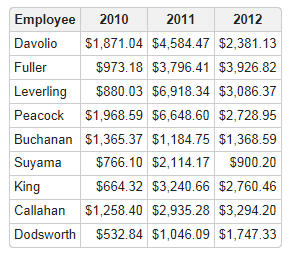
And here's what it looks like in the Crosstab Table.
Let's review the special Crosstab Table tokens, two of which were used to produce the results shown above:
As we've seen, the Crosstab Table, using the Crosstab Filter, is a powerful tool for aggregating data and grouping it, especially by time periods.
Crosstab Grouping
You can incorporate Crosstab grouping by adding the Secondary Crosstab Label Columns to your Crosstab Filter. This element works like the Extra Crosstab Label Columns element, except it can be used to group Value Columns and Label Columns together.
In this example, the Crosstab Filter is grouped by the Label Column Region:
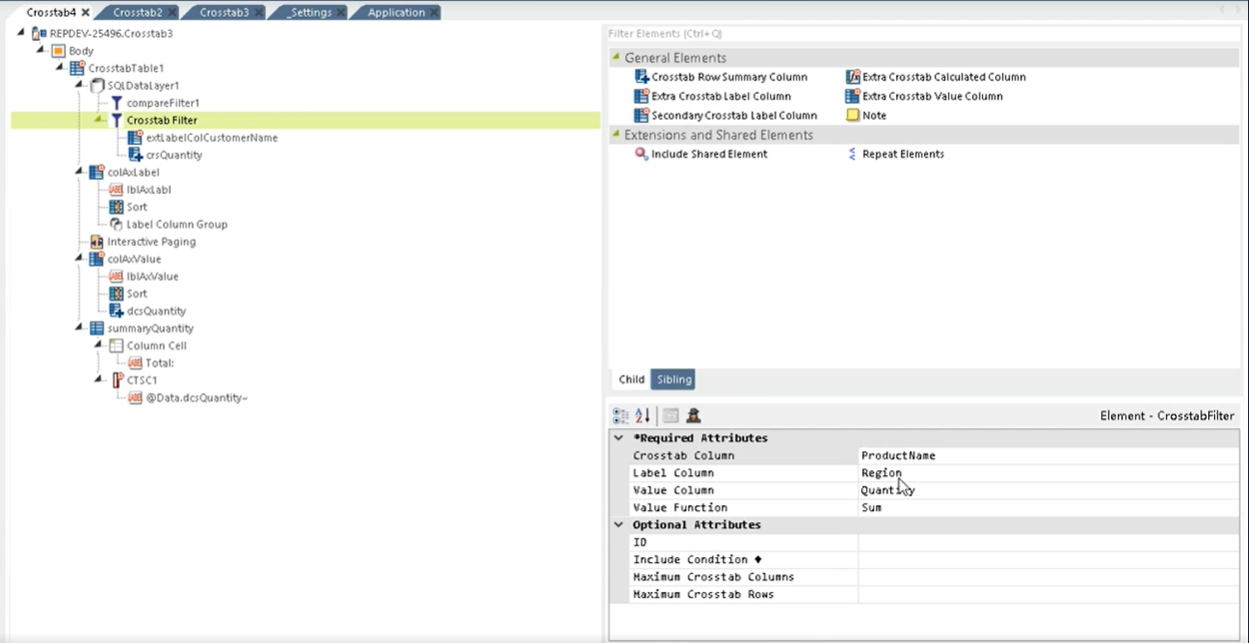
Here's what the Crosstab Table looks like, as is:

First, add a Secondary Crosstab Label Column and give it an ID and assign a Label Column. In this example, we're adding "secCountry" with the Label Column "Country":
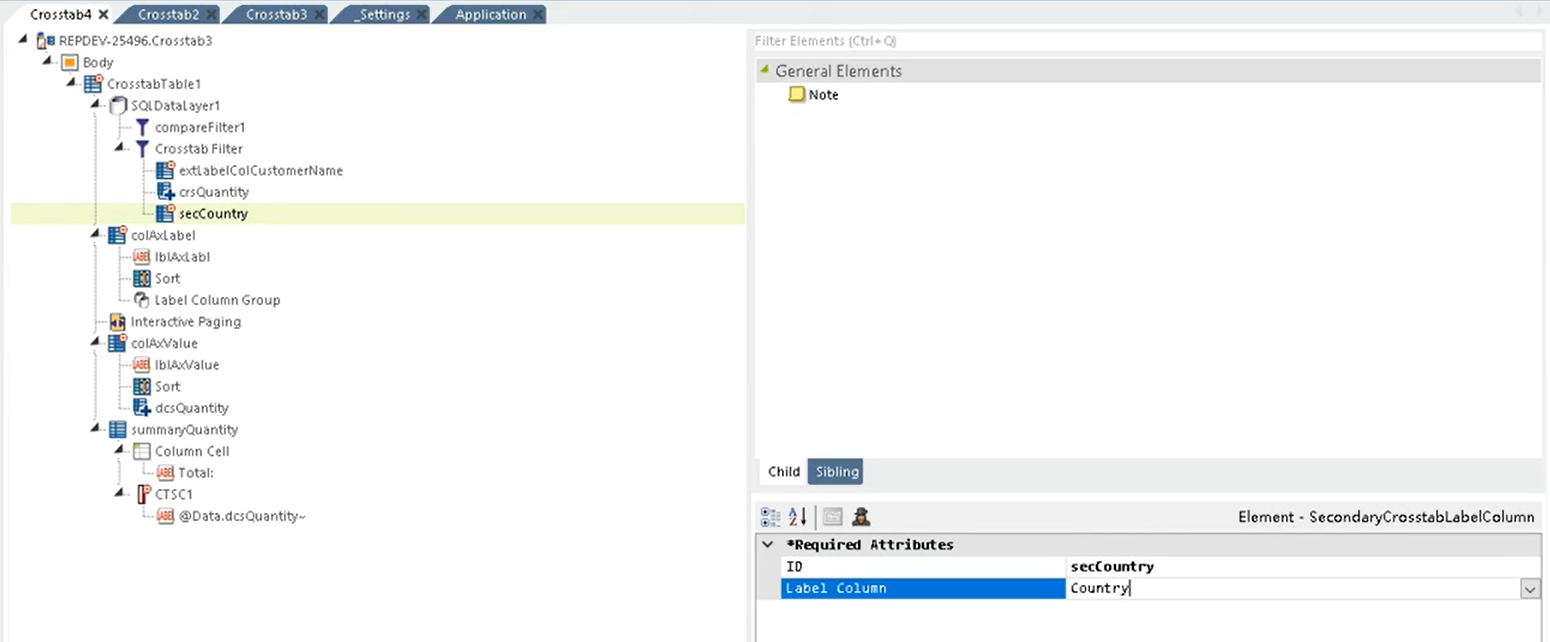
Then, add another Secondary Crosstab Label Column and give it an ID and assign a Label Column. In this example, we're adding "secProductID" with the Label Column "ProductID":
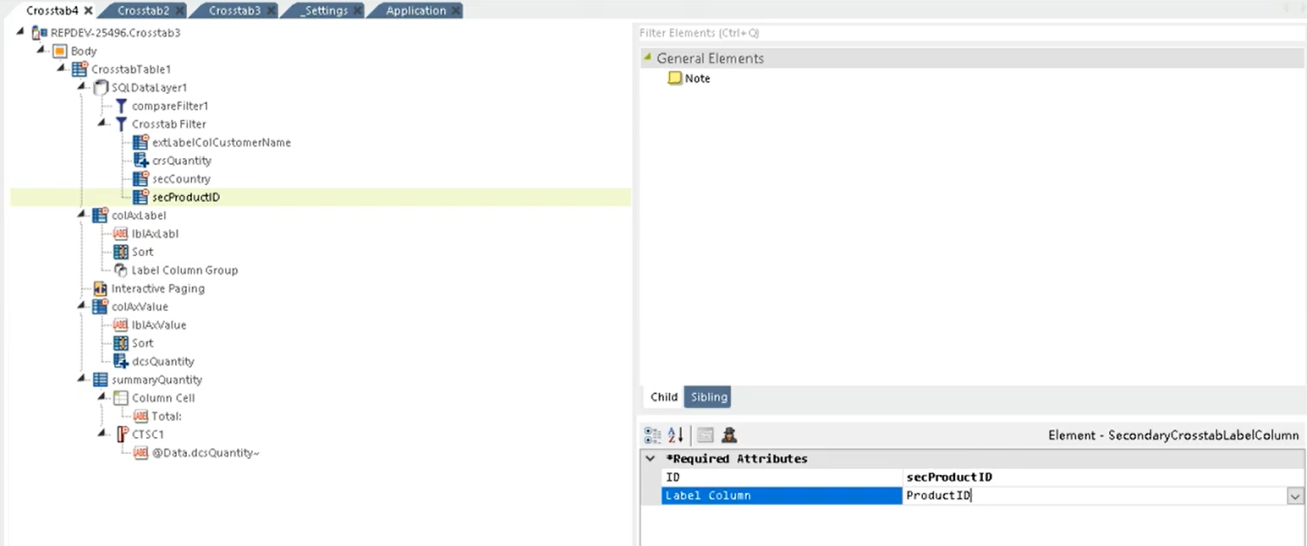
Add two Crosstab Table Label Columns to the Crosstab Filter that reflect the Secondary Crosstab Label Columns. In this example, we're adding a Crosstab Table Label Column with the ID "colCountry", Column Header titled "Country", and a Label element captioned "@Data.secCountry~" and another Crosstab Table Label Column with the ID "colProductID", Column Header titled "Product ID", and a Label element captioned "@Data.secProductID~".
Adjust the Column Span of the Summary Column to reflect the number of Label Columns you are grouping together. In this example, we're adjusting the span to 3 columns:
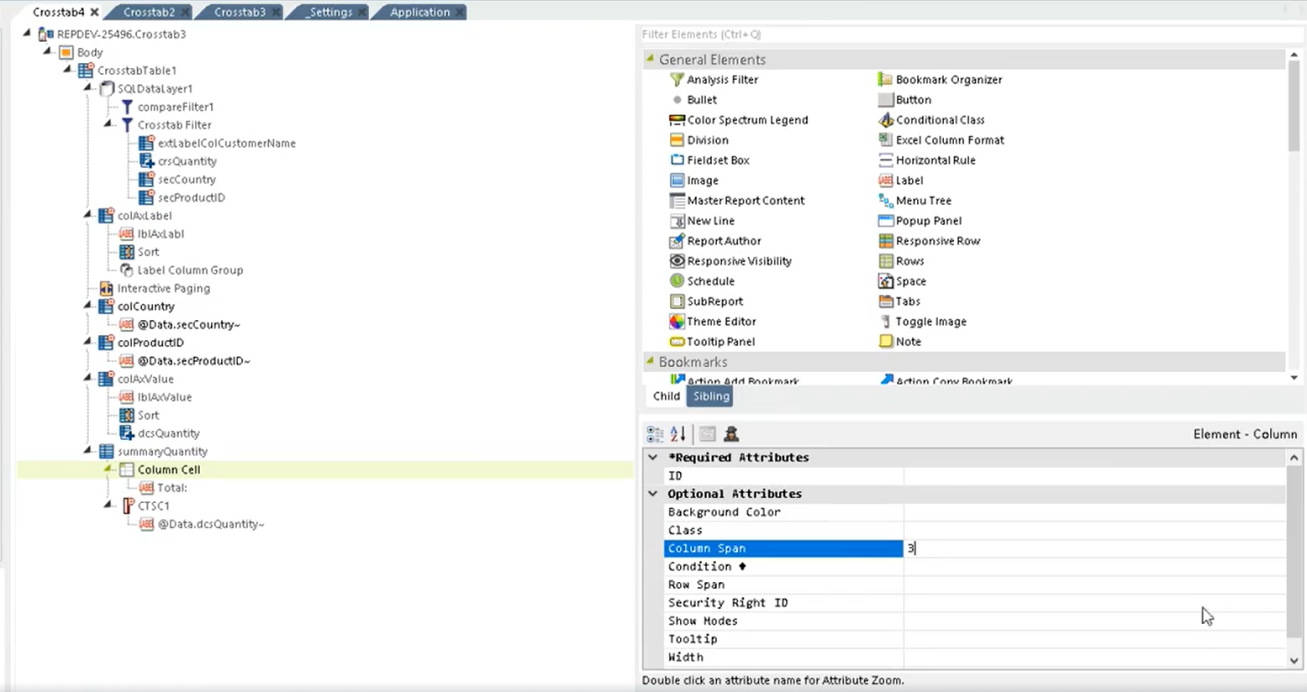
Select Save and refresh your report. Info displays the newly added Country, and ProductID Secondary Crosstab Label Columns:
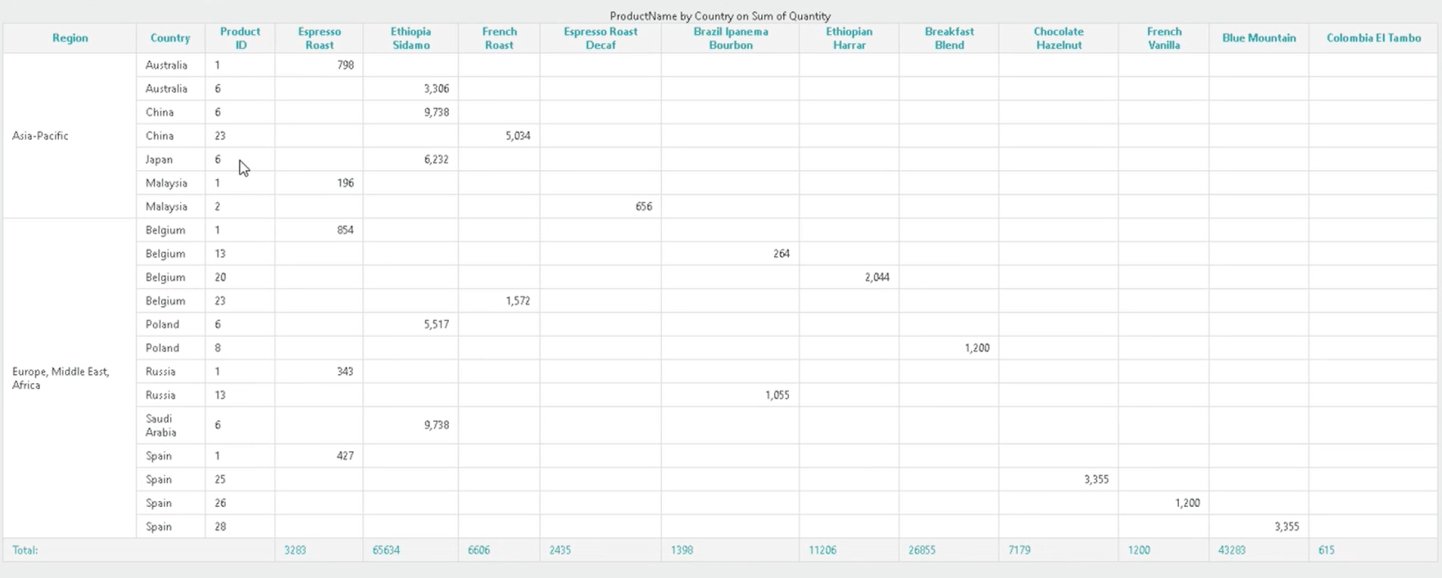
You can go one step further and add a Label Column Group element for each of the Data Columns you want to group. In this example, we're adding a Label Column Group for "Region" and "secCountry":

![]() You can also change the Merge Rows attribute to "True" (default value is "False") to merge the cells grouped together. You must do this for each Label Column Group you add.
You can also change the Merge Rows attribute to "True" (default value is "False") to merge the cells grouped together. You must do this for each Label Column Group you add.
Select Save and refresh your report. Info groups the Region and Country columns:
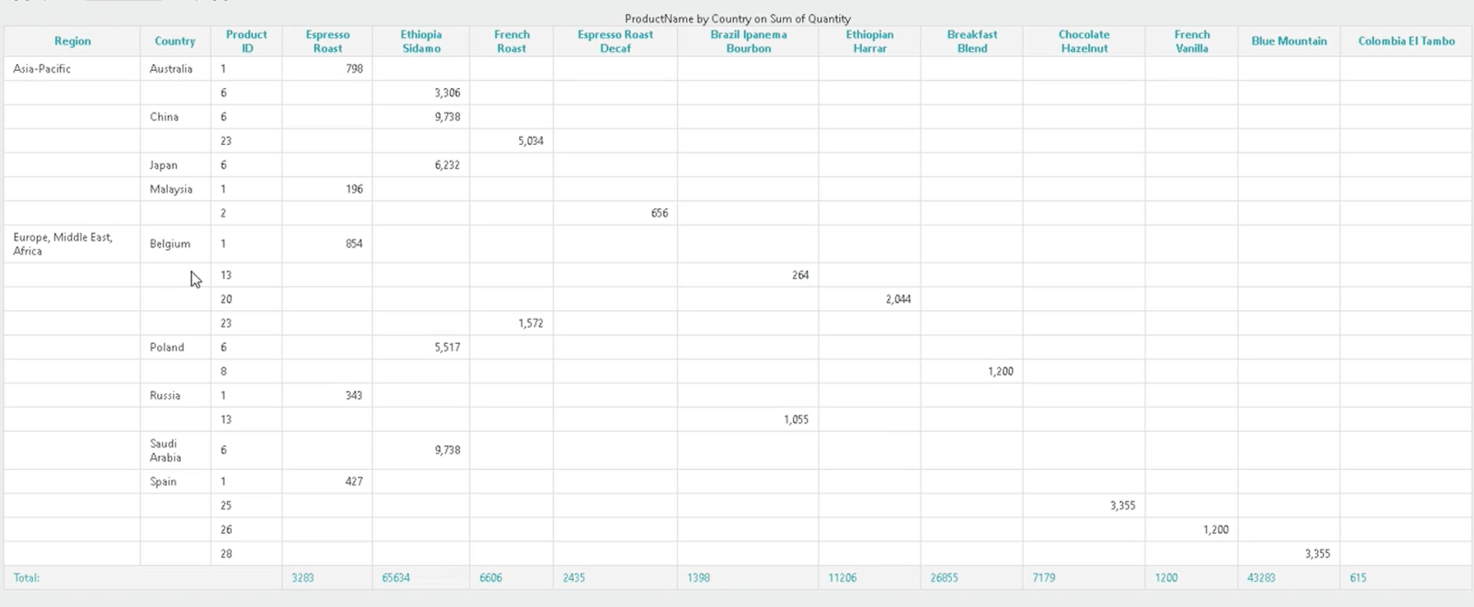
Here's what your Crosstab Table looks like if you merged the cells:
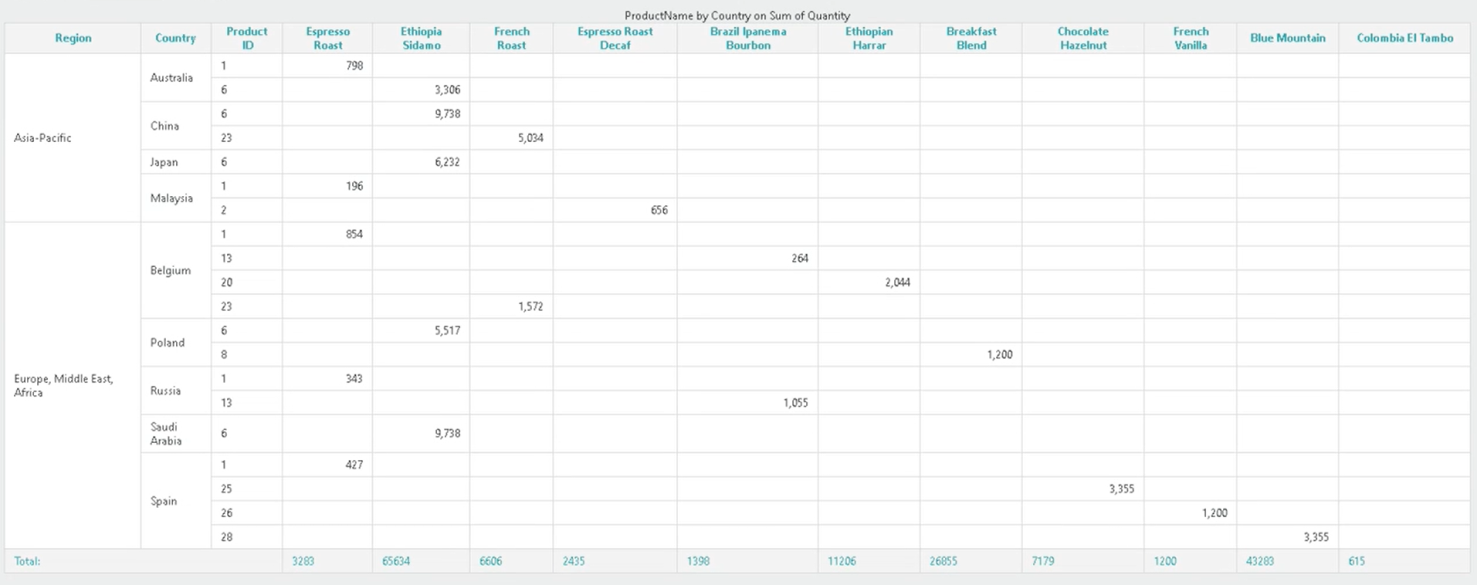
Crosstab Summary
After you apply a Crosstab Filter, you can add Header Rows and Summary Rows to total the Data Columns you have grouped together.
Summary Rows
Begin by adding a Summary Row element to your Secondary Crosstab Label Columns. In this example, we're adding a Summary Row to the "colCountry" Secondary Crosstab Label Column and giving it the ID "summaryRowCountry":
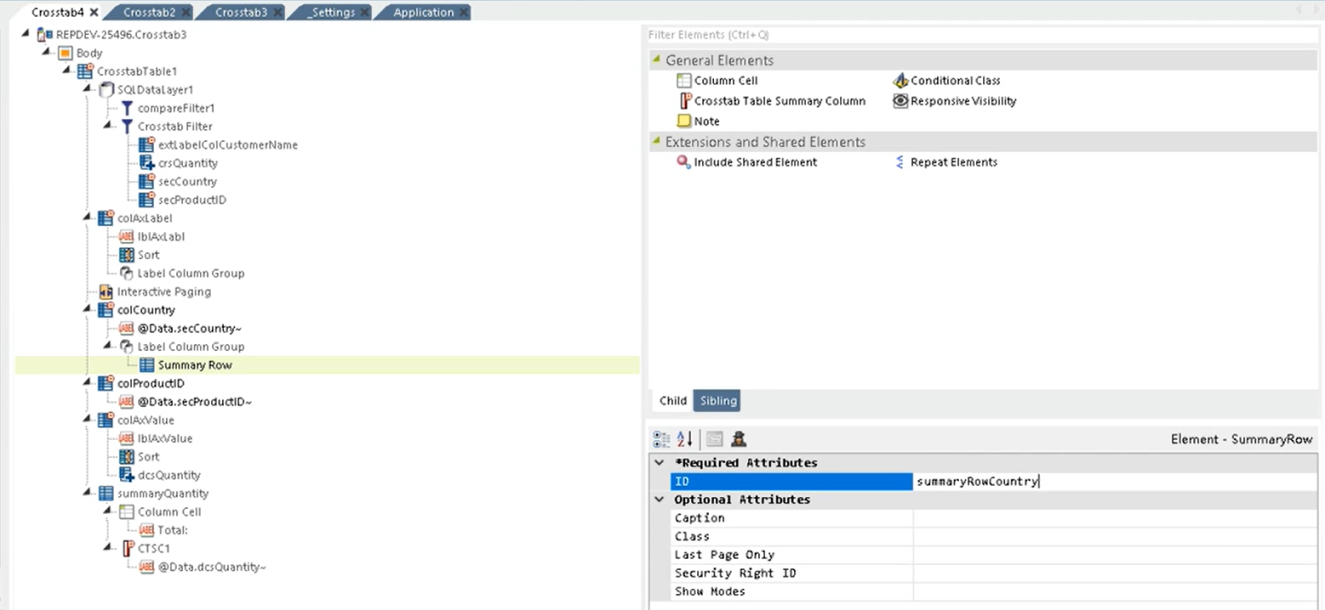
Save and refresh your report. Info displays the Crosstab Table with a Summary Row for the Country column:

You can adjust the Summary Row span by adding a Column Cell element. In this example, we're adjusting the Column Span attribute to 2.
Then, add a Label element to the Column Cell element and add a Caption based on the Data Column you wish to tally, like below:

Next, add a Crosstab Table Summary Column to your Summary Row element and give it an ID.
Below the Crosstab Table Summary Column, add a Label element and assign a Caption, based on the Data Column you are summarizing:

Save and refresh your report. Info displays the Crosstab Table with the summarized column(s):
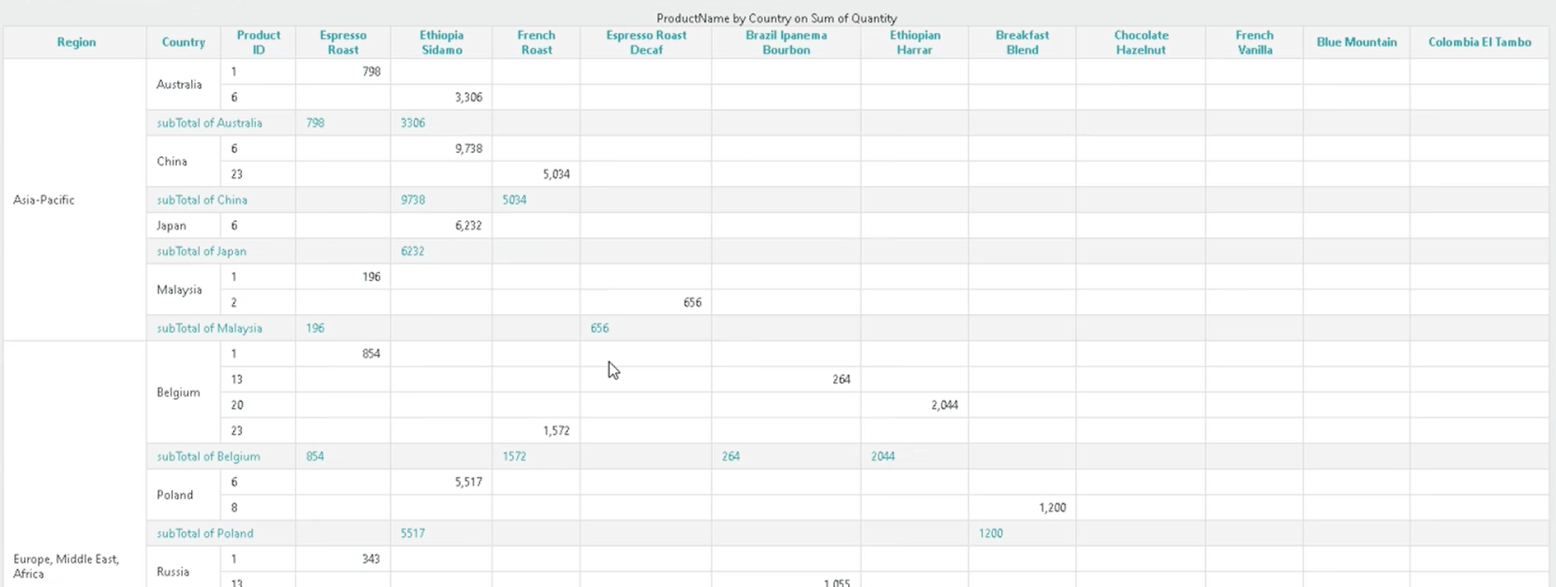
Header Rows
Add a Header Row element beneath your Label Column Group element and give it an ID:
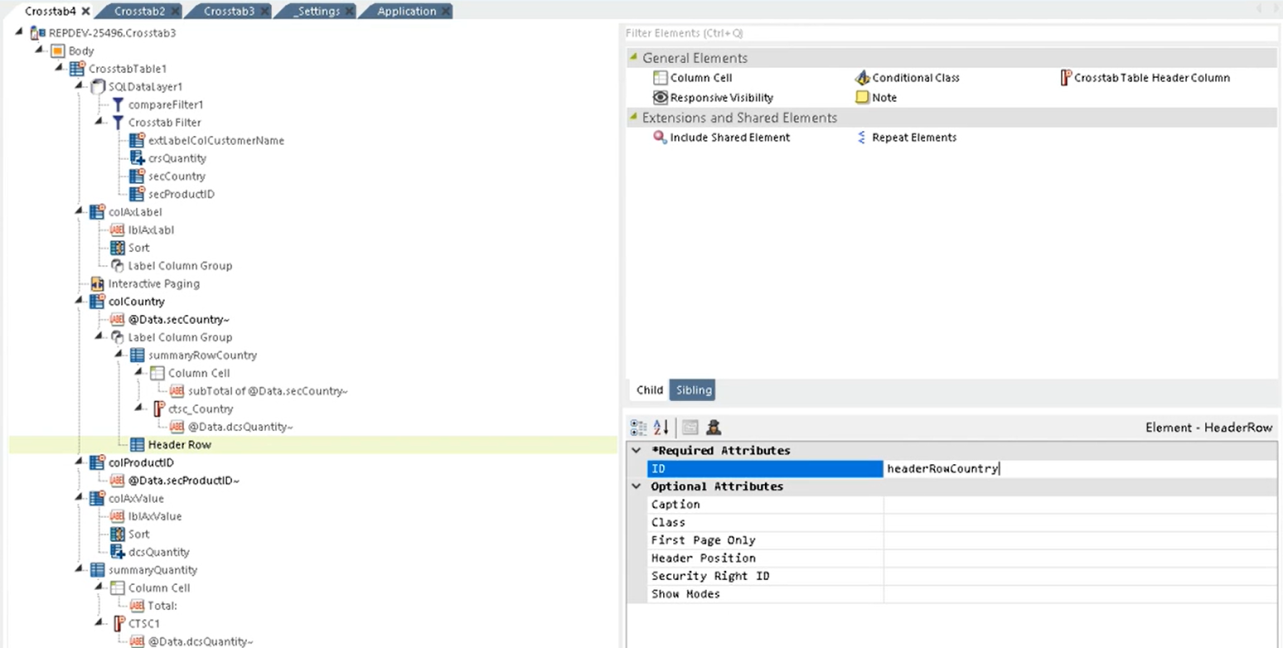
Save and refresh your report. Info displays the Crosstab Table with the new Header Row:
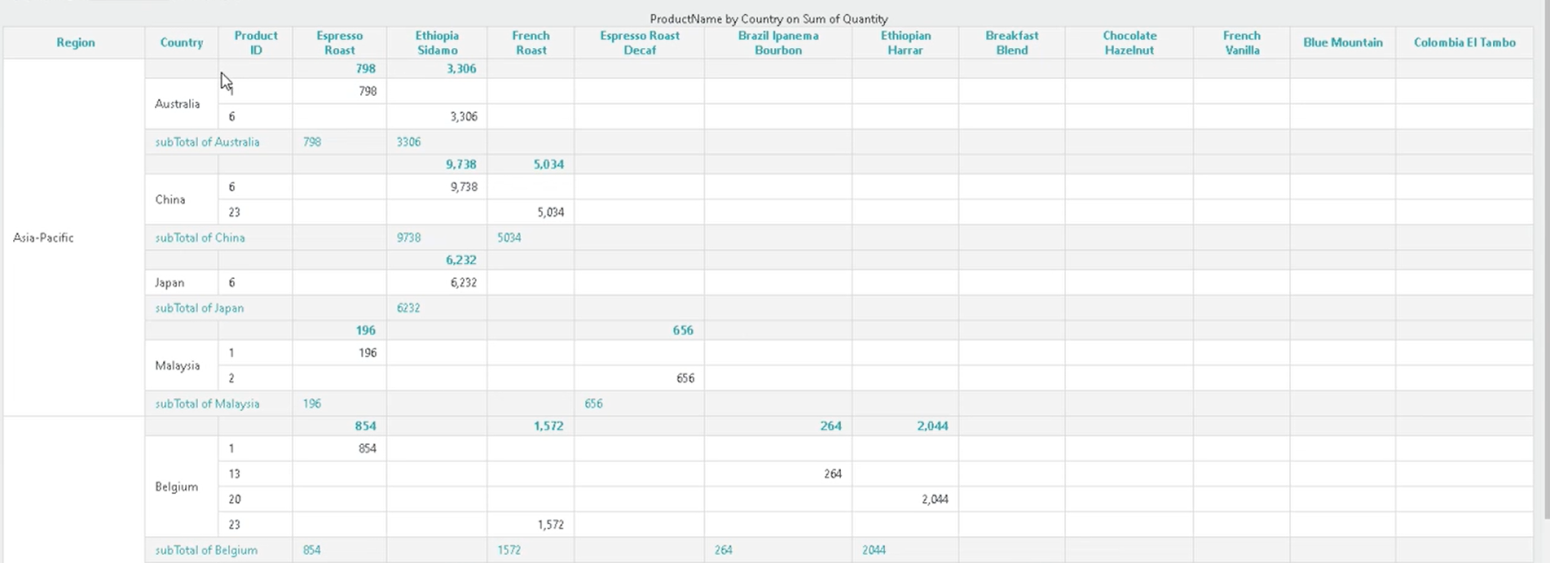
You can adjust the span of the Header Row by adding a Column Cell element and changing the Column Span attribute. In this example, we're adjusting the Column Span to 2.
Add a Label element beneath the Column Cell and give it a Caption based on the Data Column.
Next, add a Crosstab Table Header Column and give it an ID.
Then, add a Label element beneath the Crosstab Table Header Column and give it a Caption using the special Crosstab Table token " @Data.rdCrosstabColumn~", shown below:
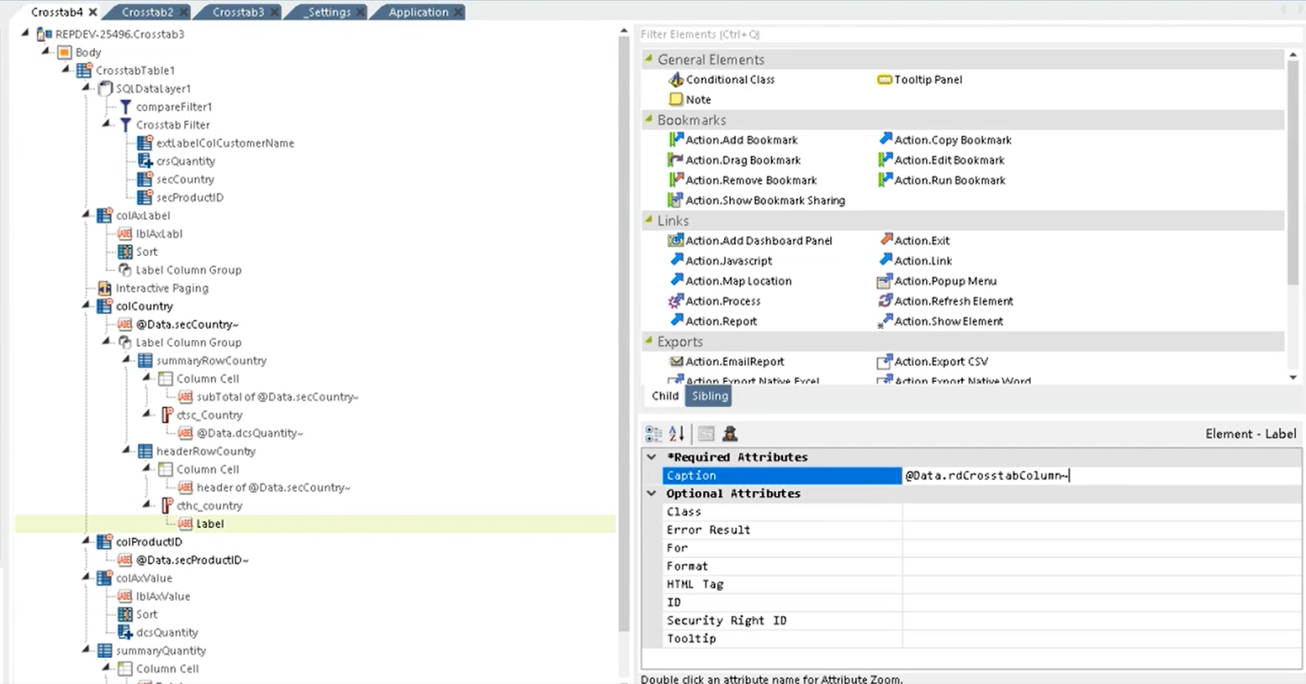
Select Save and refresh your report. Info displays the Crosstab Table with the new Header Columns:
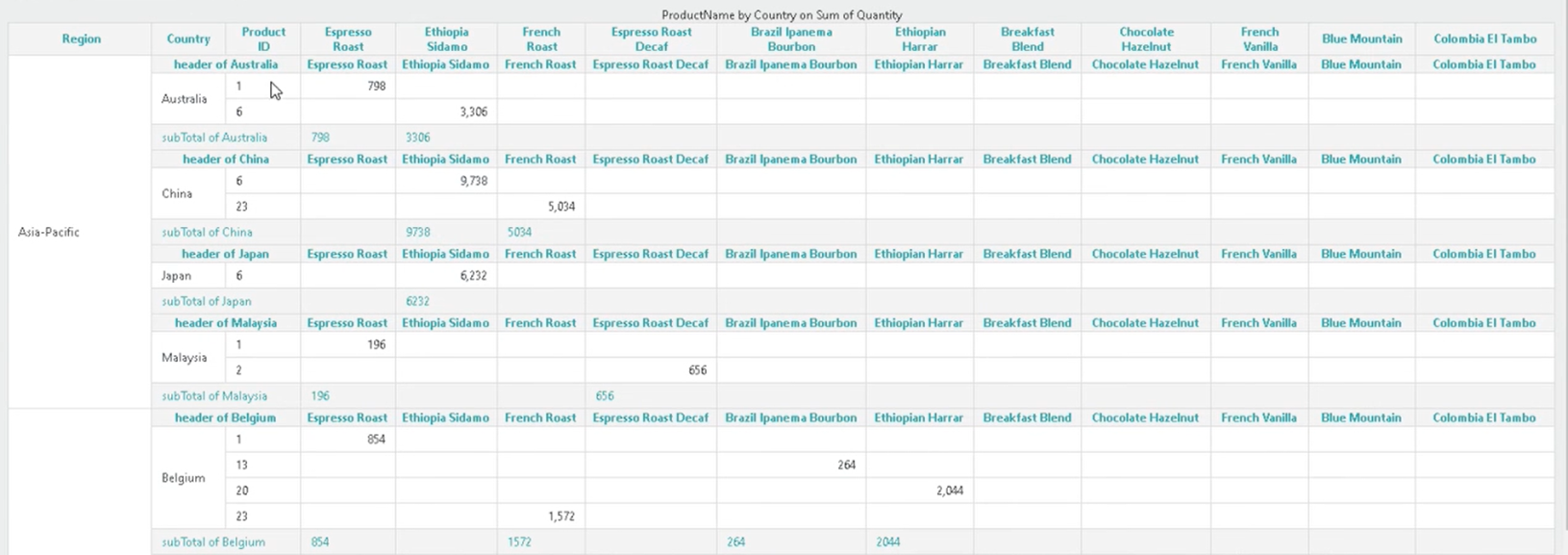
You can repeat the previous steps for the Crosstab Filter Label Column (in these examples, Region) and additional Secondary Crosstab Label Column(s) (in these examples, Product Id).
Crosstab Extras
There are five child elements that can be used beneath a Crosstab Filter, as follows: